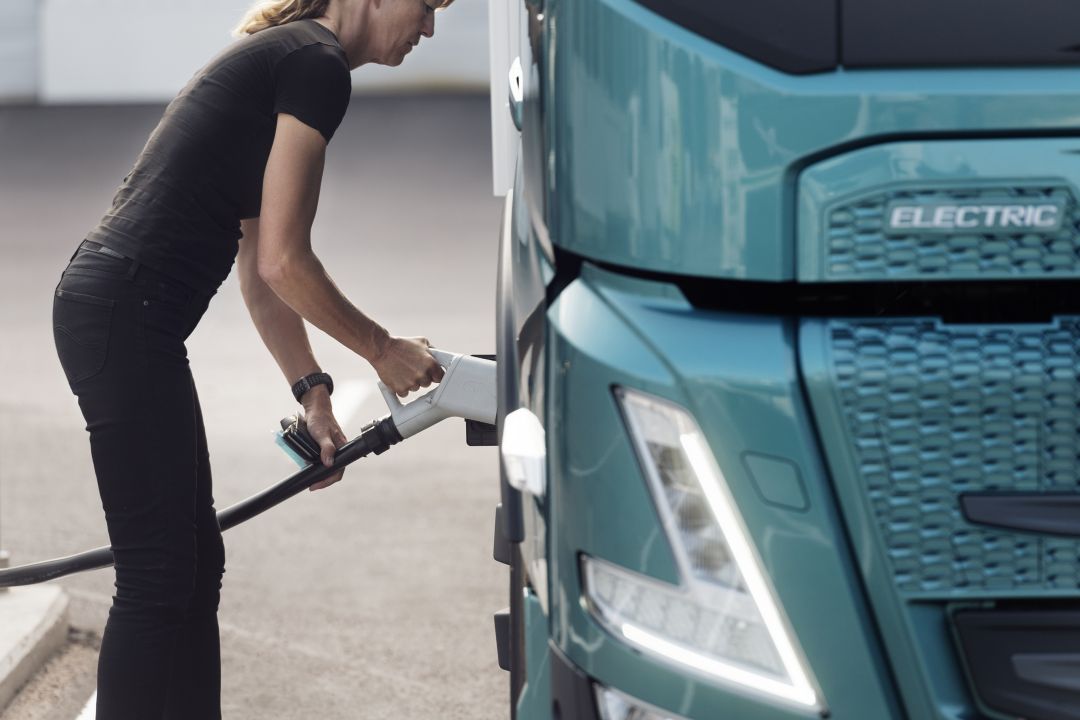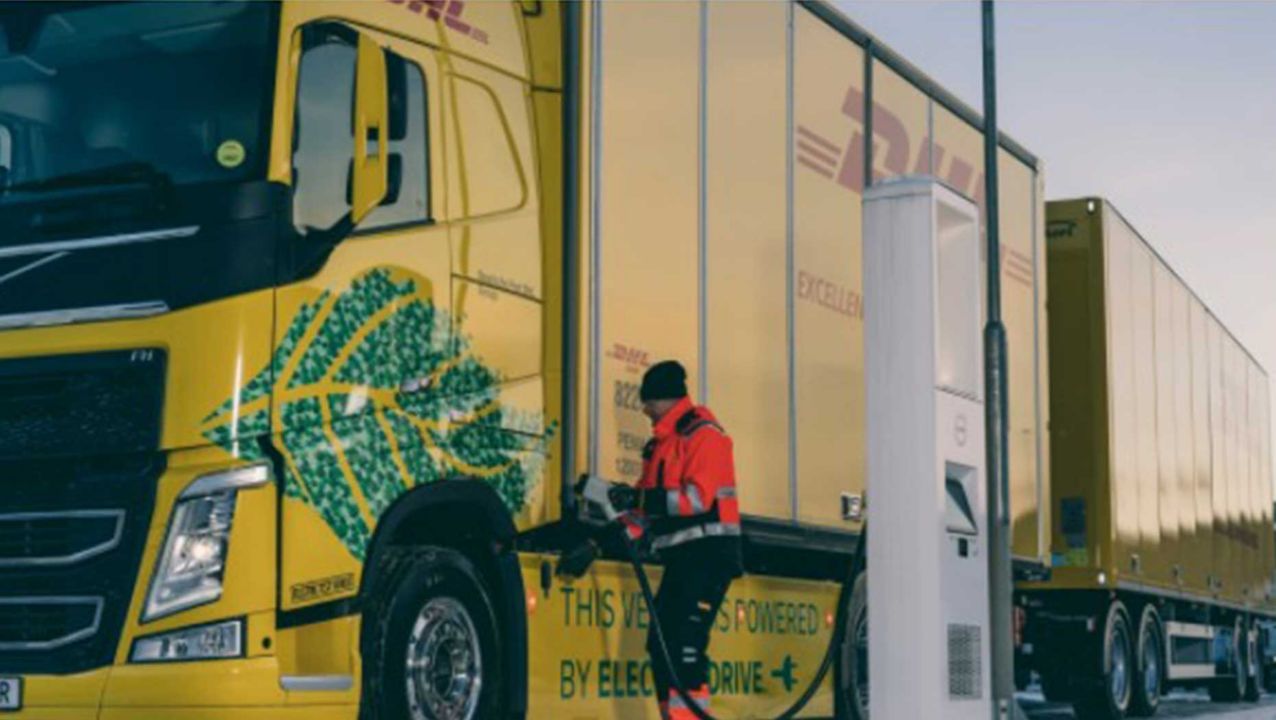Today there are a lot of misconceptions and misunderstandings regarding electric trucks. Many of those involve the batteries and their environmental impact. To be able to make well informed decisions and investments it’s important to be able to distinguish fact from myth.
Transforming the transport sector in a sustainable way to align with the Paris Climate Change Agreement is a challenge and will require both government decisions and regulations over the next decade. Meanwhile, the electrification of transport and the range of zero-emission heavy-duty vehicle models is continuing to expand. The batteries are an important part of this, but how sustainable are they?
Here is a list of common myths about electric truck batteries:
1. Electric truck batteries have such a high climate impact compared to diesel trucks, it’s not worth investing in electric trucks yet.
The climate impact from an electric truck is very low when the truck is in use, but slightly higher during production. This is because the production process is more energy intensive, and as a result, the climate impact from producing an electric vehicle is higher than its diesel equivalent. But if the battery electric truck runs on electricity generated from a renewable source, then its climate impact will be less than the diesel truck after just 100 000 km, which often takes less than one year.
This is why it’s important to make a life cycle assessment that considers the environmental impact across the vehicle’s total lifetime and not just the production phase. Investments are at the same time being made to produce batteries with 100% renewable energy and a lot of measurable progress has been made in recent years.
2. Limited availability of green energy means that charging electric vehicles will not be environmentally friendly.
The climate benefit of an electric vehicle depends on access to green electricity. There will be no climate benefit in countries with zero access to green electricity. But there are several other important environmental factors to have in mind with electric vehicles. For example, no exhaust emissions, noise reduction, better working environment, substantial improvement in local air quality and the possibility to transport goods in zero emission zones.
And accessibility to green electricity all over the world is rising. In 2020 the share of renewables in the EU increased to 37% from 34% in 2019 and the global share of renewables was 29% from 27% in 2019. In 2021 renewable electricity growth was accelerating faster than ever worldwide. According to the International Energy Agency (IEA) renewables are set to account for almost 95% of the increase in global power capacity through to 2026.
3. It’s not possible to reuse and recycle electric truck batteries.
Both are possible today and the development and investments in this area are increasing along with the battery volumes. There are also new legislations around the world, including the Battery Directive in Europe, which outlines a producer’s responsibility when it comes to reuse and recycling. Once the capacity of a truck battery reaches a certain threshold it can be operated on a route where a shorter range is sufficient or moved to a vehicle with lighter operations.
When the battery capacity has dropped below usability, there are several options. For example, remanufacturing the battery to restore it to new condition. Refurbishing the battery or re-using it in residential or industrial energy storage is also expected to be a major application. Recycling will be the final step in order to take advantage of the battery’s valuable materials.
4. It’s better to wait for future green truck investments or until hydrogen fuel cell powered trucks replace battery electric trucks.
A battery electric vehicle and an electric vehicle using fuel cell technology are complementing each other, and both technologies will be needed to meet the challenges ahead. The best solutions differ between different kinds of transport, customer needs and local prerequisites such as infrastructure.
For the most energy consuming assignments, such as heavy loads and long-haul transport, hydrogen fuel cell electric trucks is a zero-exhaust emission alternative that meet the long-term demand for productivity and sustainability. However, fuel cell electric trucks are not fully available yet, they will be increasingly available in the coming years. Battery electric trucks, on the other hand, are already very competitive and in just a few years, they can be more profitable than diesel.
The energy capacity of the batteries is an important factor in regard to the range of the battery electric vehicle. With continuous battery development and a growing charging infrastructure a major part of the freight transport in Europe can be carried out with battery electric trucks today. For several reasons, climate being one of them, one should not wait for further green investments.
5. There are human rights violations within the battery production process
An electric battery is produced with different raw materials and many of them come from mines. One important component common in lithium-ion batteries is cobalt. The sourcing of this material has drawn controversy over the last couple of years due to labor and human rights violations in countries such as the Democratic Republic of Congo, as reported by Amnesty International. The automotive industry has been working together for several years to secure the traceability in the supply chain to ensure that suppliers follow and respect human rights, the environment and business ethics.
6. The battery efficiency decrease in cold weather making electric trucks a less viable option.
The impact is less than one might think. For some trucks there are features that help keep the batteries at their optimal temperature (+25 degrees Celsius) when starting the day off.
For Volvo Trucks, as an example, the range loss at -10 degrees Celsius is about 3%. At -20 degrees Celsius it drops by about 10%. It’s good to keep in mind that cold weather increases energy consumption regardless of driveline due to heating of the cab and thereby always impacts the vehicle’s range.
7. There are not enough minerals for batteries if everything is going to be electrified.
There is good reason for manufacturers to be concerned about access to many minerals. In the short term it is not expected to be a problem but in the long term there is a need to look at alternative minerals, reduce the amounts needed and increase the usage of recycled materials.
Many companies are formulating ambitious goals for greenhouse gas emissions to comply with the Paris Agreement, and battery electric trucks are one means of achieving these goals.
Here you can read more about batteries and electric trucks and also calculate your truck’s total environmental footprint.


